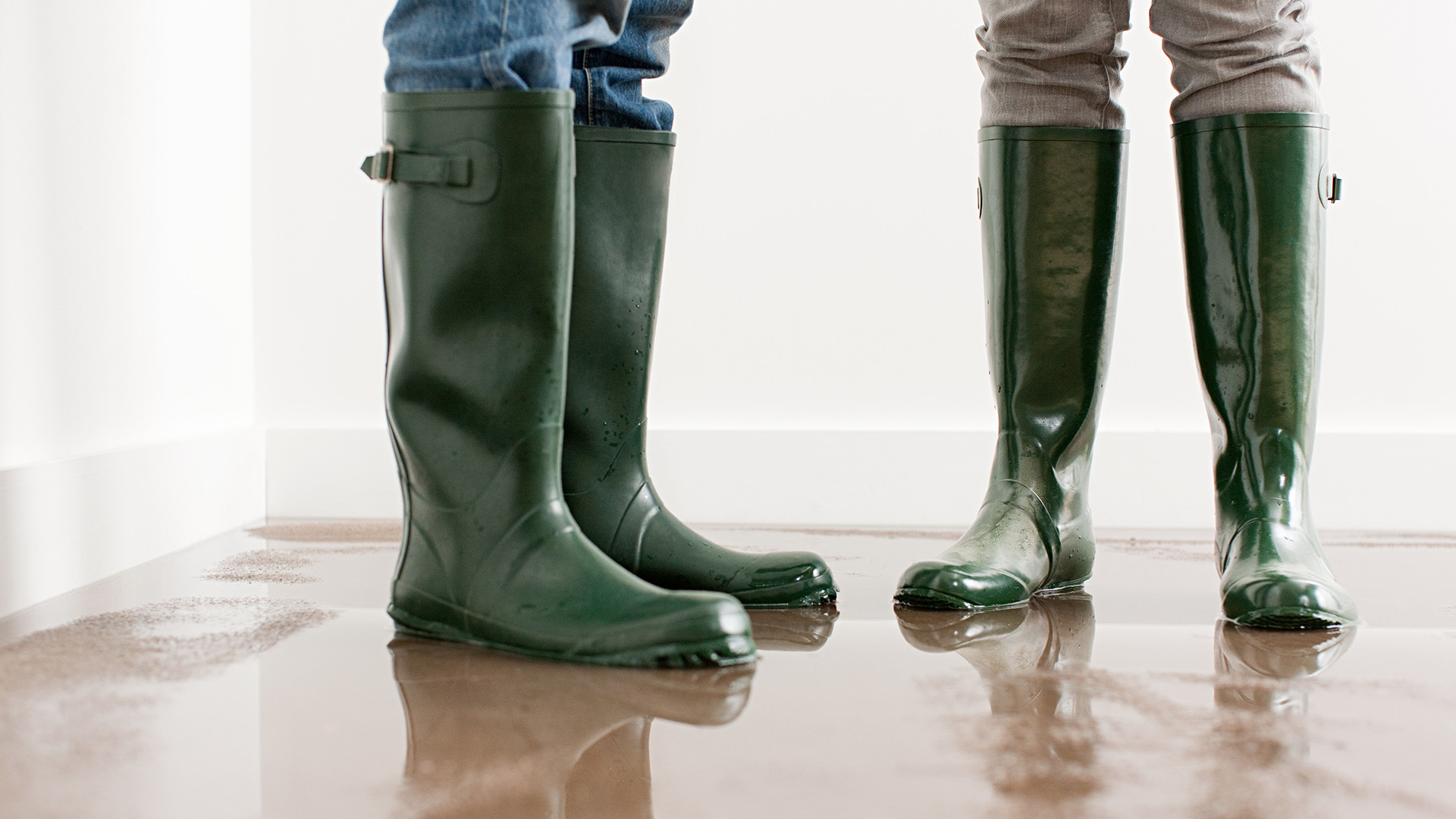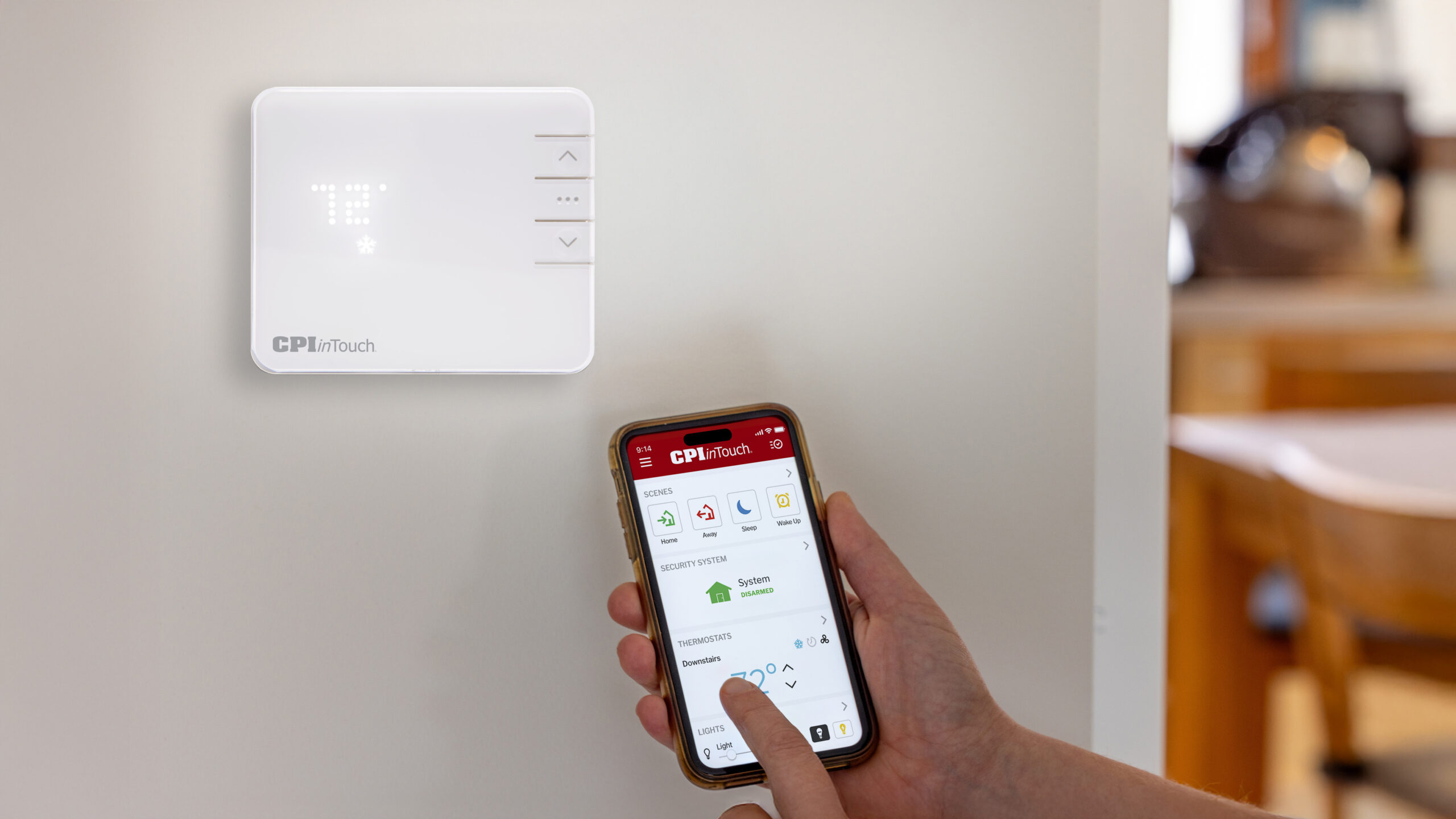There are many places where ankle-deep water is the sign of a good time (looking at you, wave pool). Your home is not one of those places. Water damage from a burst or frozen pipe is the second-most filed insurance claim in the US (hurricane damage is #1). Even worse, flooded houses can cause all sorts of water damage resulting in an extensive andexpensive clean-up, and at times, severe structural damage. The average claim for a burst pipe comes in at an average of $10,000.*
A flooded house can occur for several reasons, including a burst pipe, an overflown toilet, or a defective washing machine. In the event you’ve fallen victim to one of these unexpected accidents, we’re breaking down everything you need to know about home water damage and the actions you should take if your house floods.
8 Steps to Take If Your House Floods
- Safely turn off the electricity
- Turn off or stop the water
- Take pictures and document the water damage
- Change into protective gear
- Remove the water
- Increase airflow
- Place wet objects outside
- Call your insurance company
Safely Turn Off the Electricity
Never step blindly into a flooded basement or room without first determining if the water may have come in contact with electrical systems, an outlet, cord, or appliance. Even then, it’s best to err on the side of caution.
Electricity can travel through water and cause deadly shocks. Be sure your electricity is turned off in the affected area BEFORE entering. If you can’t turn the electricity off safely, contact an electrician before attempting any repairs.
Turn Off or Stop the Water
Once the electricity has been shut off, it’s time to assess if the leak has stopped or if water is still spilling into the room. If the water is still gushing from the overflowing appliance or burst water pipe, shut the water line off.
The easiest way to do this is by turning off the main water valve to the house. These are in different locations depending on your home, so be sure to locate the valve before any flooding occurs. Keep in mind that your main water valve may be in your yard near the road.
Take Pictures and Document the Water Damage
With the situation under control, it’s time to start accessing the damage. Before starting any major clean-up, be sure to take pictures of the initial flooding and any damage to your home and possessions.
Your insurance provider will ask for these pictures when you file your claim. Proper and thorough documentation will go a long way towards ensuring you get your proper reimbursement.
Change Into Protective Gear
As much as you may want to wade into the floodwaters to begin clean-up, be careful – depending on the source of the flooding, the water could be dirty or contaminated.
At a minimum, you want to wear waterproof boots and pants. You may also want to wear goggles or a mask, depending on the water level.
Remove the Water
Once you’re geared up, it’s time to remove the excess water to mitigate the risk of further damage and mold growth.
If there is an extreme level of flooding, you may need to lean on a professional service or plumber to help pump the water out of the room.
Increase Airflow
After the water has been removed, it’s crucial to increase the airflow in the flooded areas of your home as much as possible to help everything dry out. Open windows and doors and use fans to circulate air throughout the area.
Dehumidifiers and heaters can also be used to remove moisture from the air and help dry things out. If you’re working with a professional clean-up service, they will often have their own machines that they’ll bring in to help dry out the room.
Take All Wet Objects Outside
If it’s not raining, be sure to take everything you can out of the room and place it outside. The fresh air and sun will help to dry those objects. Removing these items will also help reduce the amount of moisture that’s inside the flooded space.
Call Your Insurance Company
As soon as the flooding has been immediately addressed, contact your insurance provider, and begin your claim. Do this before calling or talking to any professional service. Although this can be a tedious process, the sooner you start your claim the quicker it will process. Further, your insurance provider may have established relationships with clean-up specialists in your city.
CPI Safety Tip: Don’t wait for a burst pipe or leaky toilet to flood your home before you learn whether you’re covered. Take the start of this new year to review your homeowner’s insurance policy and ensure it covers flooding. Depending on your policy, you may need to purchase a separate additional policy or increase your coverage to ensure you’re protected.
Tips to Prevent Water Emergencies in Your Home
Of course, the best way to handle a flooded home is to do everything possible to prevent flooding incidents in the first place.
Here are a few precautionary measures you can take to avoid potential disasters and thus, costly water damage restoration:
- Keep an eye on the weather. If it gets too cold, let your faucets drip to help prevent pipes from freezing and bursting in the winter.
- Regularly check your water supply lines to your refrigerator, dishwasher, toilets, and laundry machine.
- Test your sump pump every couple of months to ensure that it actively pumps out water and there are no blockages.
- Know where your water shutoff valves are and how to turn the water off when needed.
- Have an emergency water supply on-hand in the event of any emergency.
Extra Security to Prevent Water Emergencies in Your Home
For added protection against water damage, consider pairing a smart home water sensor, like the one offered by CPI with their latest Smart Water Shut-Off Valve. Reduce your chances of costly repairs by being notified about water-based emergencies in real-time – plus, with the Smart Water Shut-Off Valve, you’ll be able to turn your water off from anywhere, directly on your app. With this level of real-time information, you’re able to address the issue more quickly and avoid costly repairs.
The Importance of Preparation
Unfortunately, there’s no way to know when a burst pipe, overflowing toilet, or leaky dishwasher may occur. But, with a little bit of education, foresight, and planning, you can put a plan together to help keep you and your belongings safe. For tips like these, and more, visit the CPI blog to learn more.
Sources:
*Claimsmater, “Our Best Burst Pipe Insurance Claim Tips For Water Damage Claims.”




